Dogs and Indians were infamously kept away from the clubs and restaurants frequented by Europeans during the colonial days under the British. While we do not know how the dogs took the ‘Dogs and Indians not allowed’ signboards – or how it kept them away, for that matter – it definitely struck a bitter note with the natives. Back then it led to bloody skirmishes, a suicide mission, even: In 1932 the feisty 21-year-old Bengali revolutionary Pritilata Waddedar led an armed attack on a club which displayed the sign and killed herself by consuming cyanide when she was caught. It’s an episode filmmakers today rely on to fire up an otherwise moist squib of a plot – Ashutosh Gowariker’s Khelein Hum Jee Jaan Se (2010) and more recently Chittagong (2012). It continues to illustrate an exemplary parallel for unsavoury discriminations – I could think of nothing else when I saw this one at the Taj Mahal two weeks ago during my trip to Agra and further on to central India.
The preferential treatment – advertised boldly and enforced with a Dyer-like insolence – begins right at the more popular entrance, the East Gate near Shilpgram. Last year domestic visitors to the monument outnumbered foreigner tourists seven to one. As more Indians shelve international travel plans because of the fallen rupee, the ratio this year is expected to hit at least a 10 to one. Of the three barricaded functioning queues, two called ‘general ticket holders’ were for Indians and one for the exclusive use of foreigners was addressed ‘high value ticket holders’. Even when there was no foreigner in sight and the ‘general’ lines snaked for miles, the ‘high value’ line was kept clear. Though I did broach this with the ticket collector, I didn’t jump lines for the machine-gun totting central industrial security force personnel who handle the heritage behemoth’s security. “You have to ask the ASI,” he replied, the Archaeological Survey of India, which looks after our heritage buildings.
Once you enter the monument grounds the routes for the ‘high value’ and ‘general’ classes go in remarkably opposite directions. The foreigners are ushered into a comfortable chamber nearby where they are given – this one takes the cake – shoe covers! They are also given teeny 200 ml water bottles and a cute little city map of Agra. The arrow showing the way for ‘general ticket holders’ takes you through a full length saunter of the Taj Mahal till you reach rows of tacky-pink racks where you have to take off your footwear and take in the Taj barefoot. It is unpleasant watching the elderly ones huffing out that extra distance or kids frantically prancing about once the marble gets hot. What leaves a bitter aftertaste is the blatant on-your-face discrimination and the over-the-top frivolities – the leak is free for foreign tourists – to assuage probably the guilt of a gargantuan fee.
Though discrepancy in entry fees to heritage sites between natives and foreigners is a done thing the world over, the margin here you could say is a bit on the wide side: Rs 20 for Indians and a whopping Rs 750 for non Indians, including NRIs. When I saw a nice-looking Sardar with his nice-looking Indian family specifically asking for a foreign ticket, I didn’t know whether to be happy at the integrity or cry at the willing march towards daylight robbery. I mean, no tocsin came alive when I walked into the ‘high value’ apadana mentioned earlier; I wanted to know what went on inside. Even then I didn’t get a second look nor did any of the propitious ushering take a backseat when I declined the single-swallow water bottle; actually quite a few from the international crowd said a responsible no for the plastic. The 3×2 inch pocket map, quite a handy one at that (should be given to Indians too, if the ASI can afford it), has even mentioned FYI how the monies are split: From the Indian ticket price of Rs 20, it’s a neat down the middle between the ASI and the Agra Development Authority; from the Rs 750 tickets, the ASI gets Rs 250 and the ADA Rs 500! I did ask somebody whether the free loo for foreigners was built by the ASI or ADA but got no reply. But I had to talk to somebody. Find out if anybody else empathised with my distaste. Sympathised, at least. The superintending archaeologist with the ASI not only stood me up on my interview appointment but didn’t answer my calls either.
“You are right about it leaving a distaste,” said Dinesh Kumar, regional tourist officer, in charge of Agra and Aligarh divisions with the Uttar Pradesh Tourism department. He was a genial man, quite mature beyond his years (he was my same age), who really wanted to do something. The traffic congestion in Agra was worrisome, road conditions were pathetic, lack of power ate into business – he admitted to it all. But he assured, I hope not in the typical babu-fashion, everything was going to be great in the near future. His enthusiasm was glowing and he was brimming bright with promises – the planned inner link road was just the beginning. I brought up specifically the ‘high value-general’ divide, again.
“The matter had come up earlier too but we didn’t know what to replace it with,” he said.
It was not about replacing a few words, I reminded him, but doing away with the preferential treatment that started at the point of entry, that too of an Indian legacy. Right from the protection of the Taj Mahal to the physical safety of the foreign tourists, there was so much at stake he said which was understandable. He pointed out that putting both Indians and foreigners together in the same line may not be such a great idea as there had been rampant instances of pick-pocketing and molestation. I told him my pocket had been cut too, just the previous day. Thus it would be unlikely a pickpocket would discriminate between, well, pockets.
Dinesh Kumar’s years in the bureaucracy steered the debate: shoe covers for everybody, a common source of drinking water to avoid plastic in a heritage zone, free loos and that cute little map for all – all of these could wait, had to wait. It again came to replacing a bunch of words.
“What do you suggest?” he asked, now eyeing me for the potential caitiff I could be.
“Just ‘Indian’ and ‘international’ might be a good start,” I offered.
Mr Kumar was scribbling notes on an A4 paper as I spoke. The neelam-blue paint of the wall came off in many places in psoriasis-patterned patches. The paper on which he wrote was clamped in place by a rusty spine of a faded pink file. An ancient fan sniggered above. Suspiciously similar looking files were stacked ceiling high on one corner of the room. The only incongruity – and solace – was a new air conditioner that made the humidity and heat outside more unbearable.


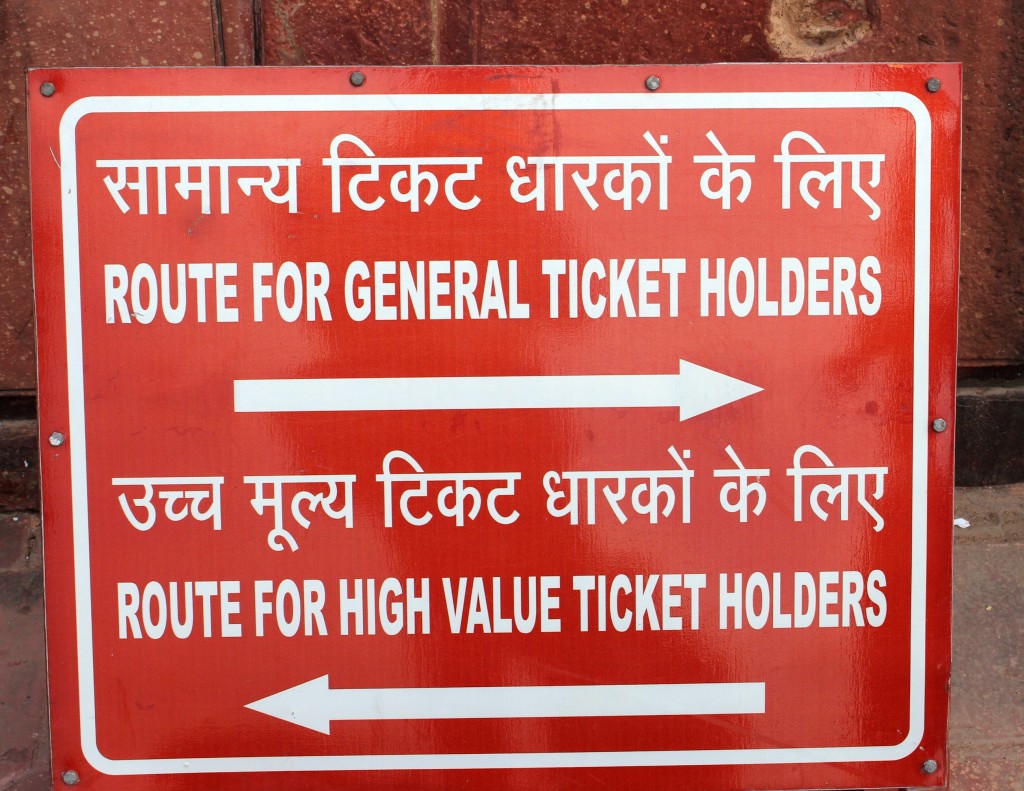
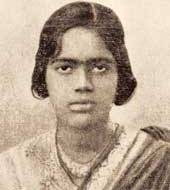
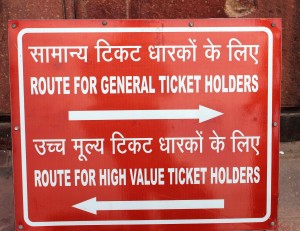
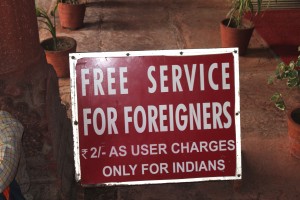
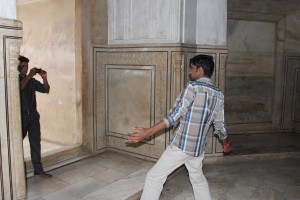


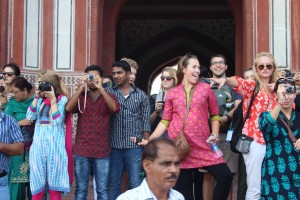









Ha ha.. same fee schedules for Keralas wildlife parks too- the only ones who are usually quiet when watching wildlife are the foreigners..maybe because they cough up more??
Or they must be busy kicking themselves… hahaha.